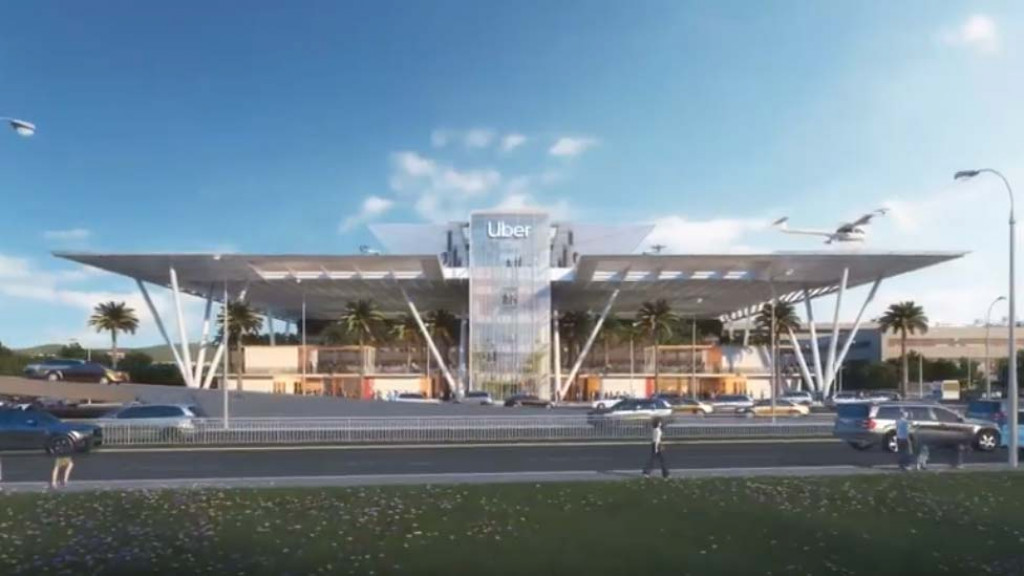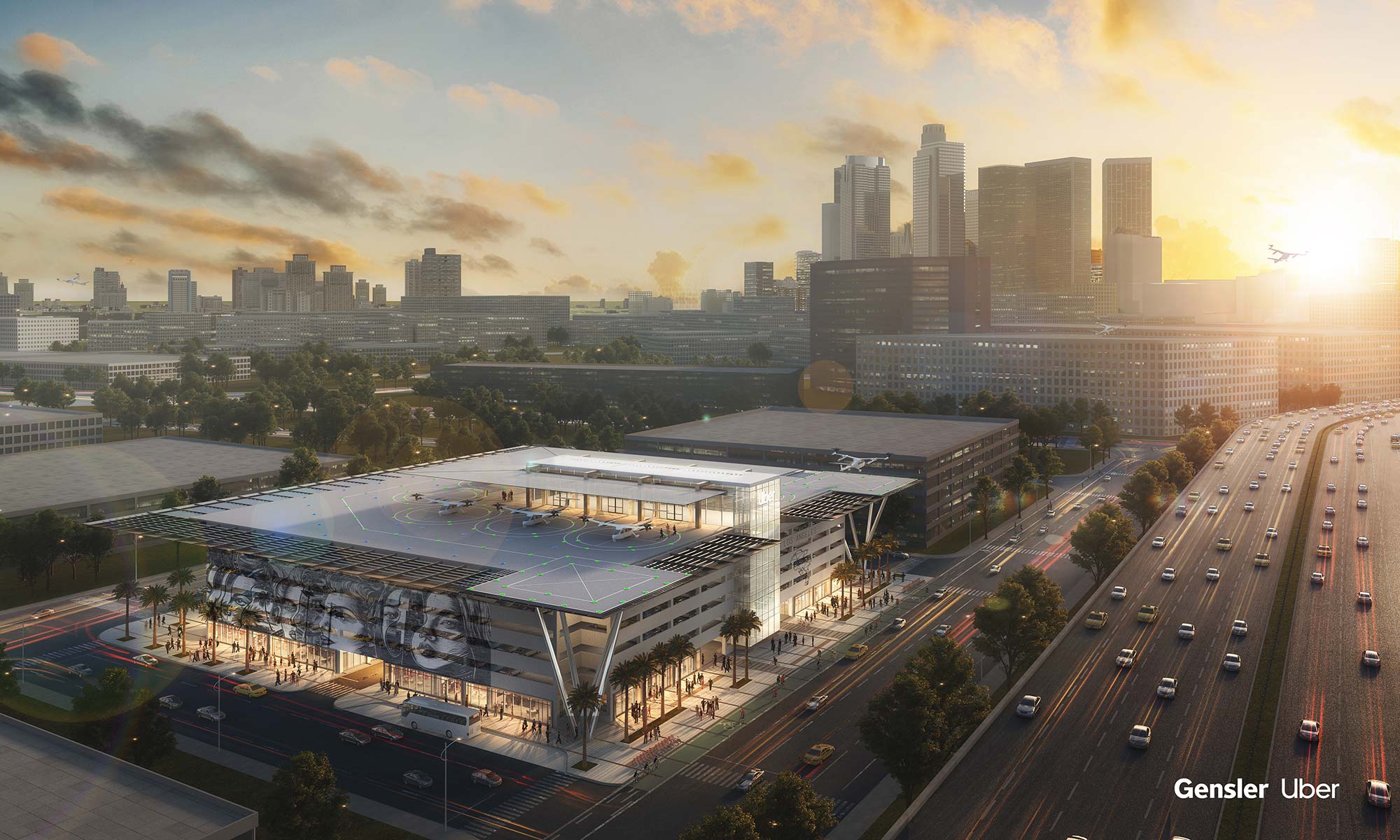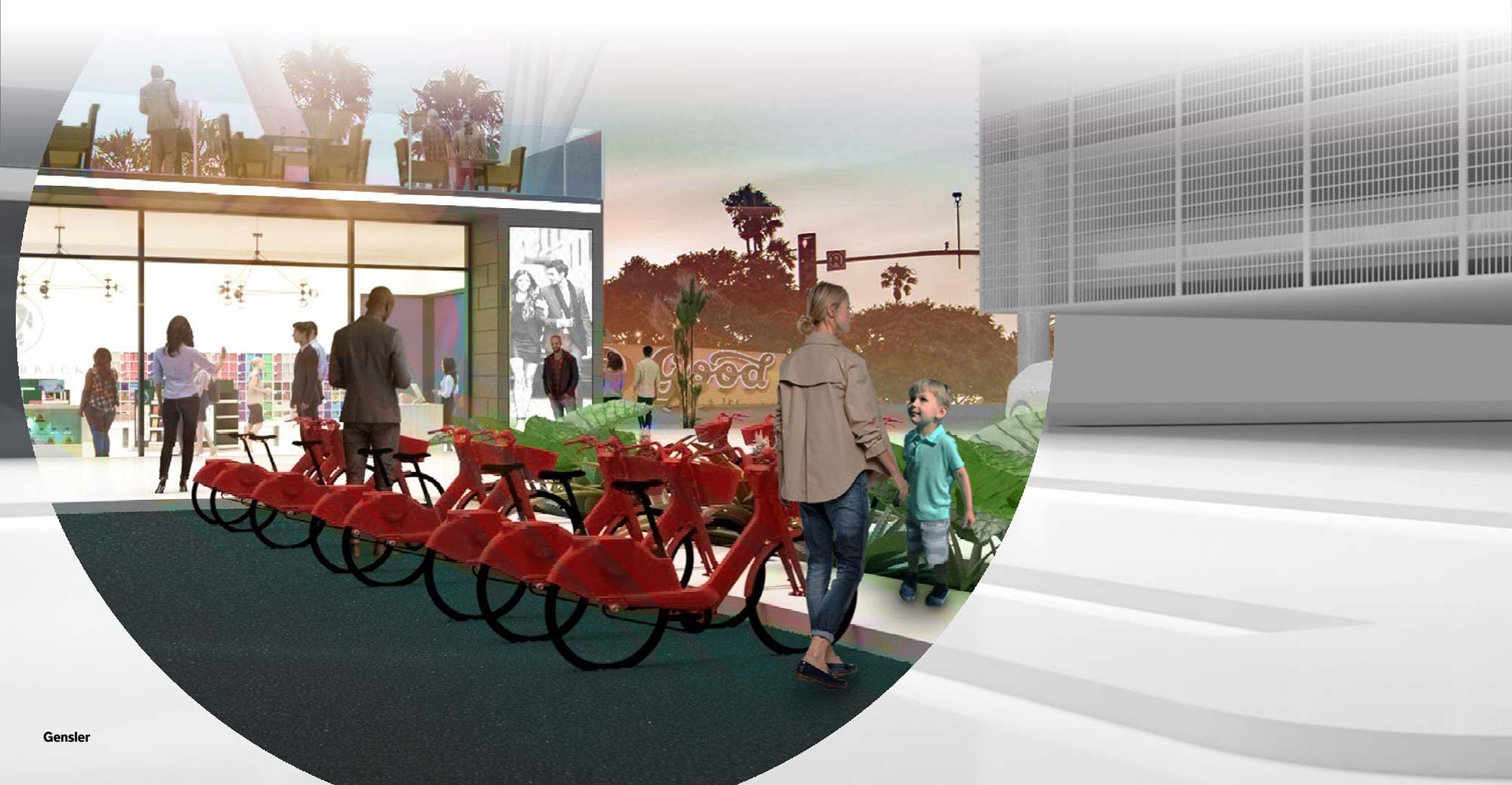CitySpace: Gensler’s Uber Elevate Skyport Concept Reimagines the Future of Cities
Gensler’s mission is to use design to shape the future of cities, and that starts with shaping the individual human experience within those cities. For the first time ever, more than half of the world’s population lives in cities, and their numbers are swelling by a million people each week. About 3.6 billion people live in urban areas now.
As architects and designers, Gensler is dedicated to improving cities for people. To do that, we believe the places and spaces within a city should be connected, mobile friendly, resilient to climate change, provide great human experiences, and have a significant social impact.
Mobility in particular has an enormous impact on people’s experience of a city. If we can improve mobility, we can give people back time and reduce carbon in our atmosphere, and we can begin to give our city streets on the ground back to people. This is the promise of Aerial Rideshare, and this is why we created our CitySpace concept for Uber’s Skyport Mobility Hub.
On Tuesday, June 11, Uber revealed a new collection of Skyport concepts at the Uber Elevate Summit in Washington, D.C. Gensler’s design, CitySpace, was one of these concepts, showcasing a realistic approach and rapid rollout for launch in Dallas and Los Angeles in 2023.
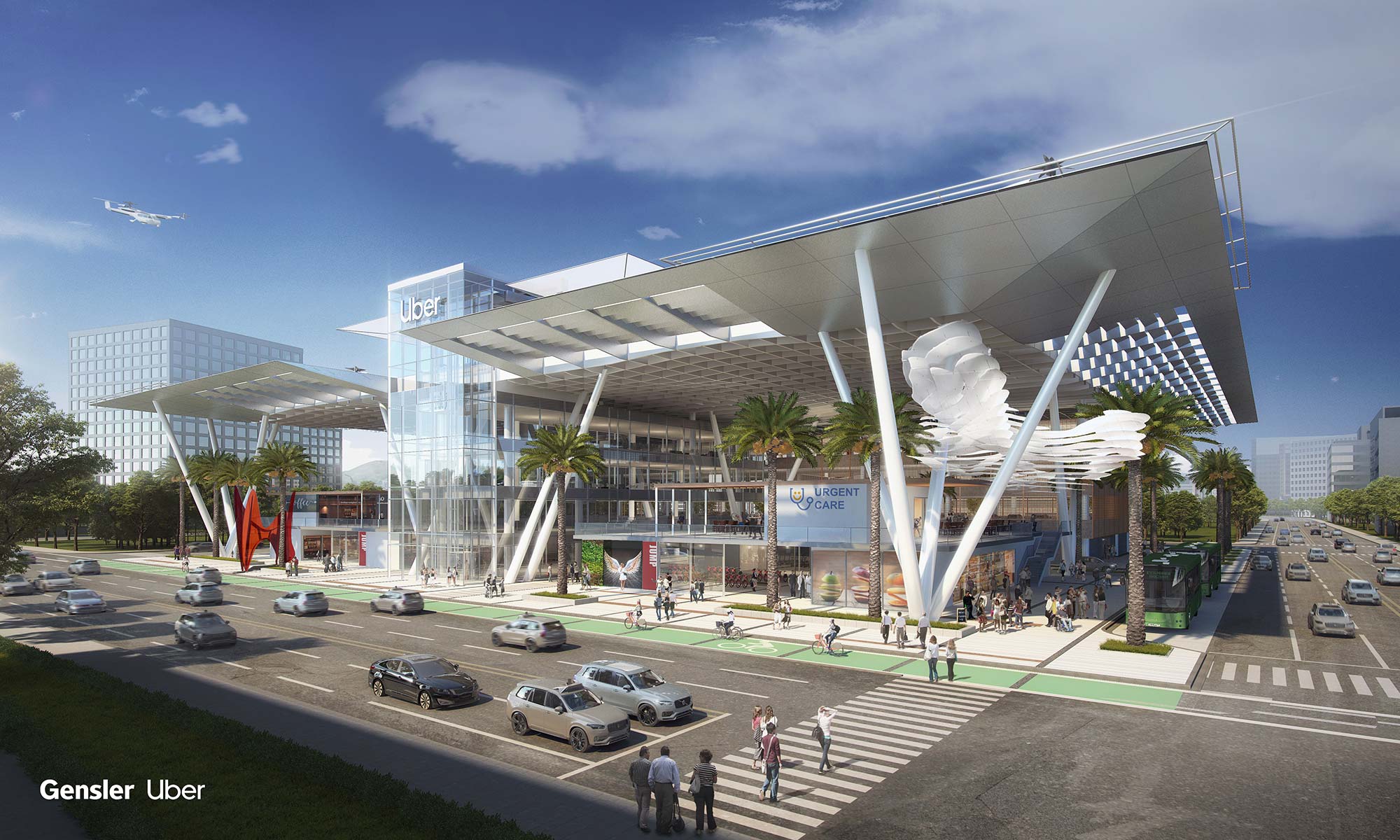
Gensler’s CitySpace concept for the Skyport Mobility Hub is tomorrow’s mobility, today. The team created two concepts that share a common kit of parts: a retrofit to existing buildings and a bespoke ground-up solution. CitySpace is a community destination and connection point that welcomes people at the beginning or end of their journey, while dramatically reducing parking impact on the city. This design solution becomes a pivotal piece of the urban fabric, binding the neighborhood together with a central place to shop, dine, and engage while reducing congestion across the city.
A TURNING POINT IN MOBILITY
As traffic congestion and time lost in commute reach record highs, society is fast approaching a turning point in urban mobility. With the entry of autonomous vehicles, the reliance on cars will diminish rapidly. Aerial rideshare promises to be the catalyst that redefines how people move about and experience urban environments.
Skyport Mobility Hubs will also play a vital role in how people experience a city. They’ll change the way we navigate, explore, and connect to each other and the urban environment. Skyports will become the community center that binds diverse communities together, while also linking together diverse modes of mobility. These focal points will be an unprecedented orchestration of movement and modality.
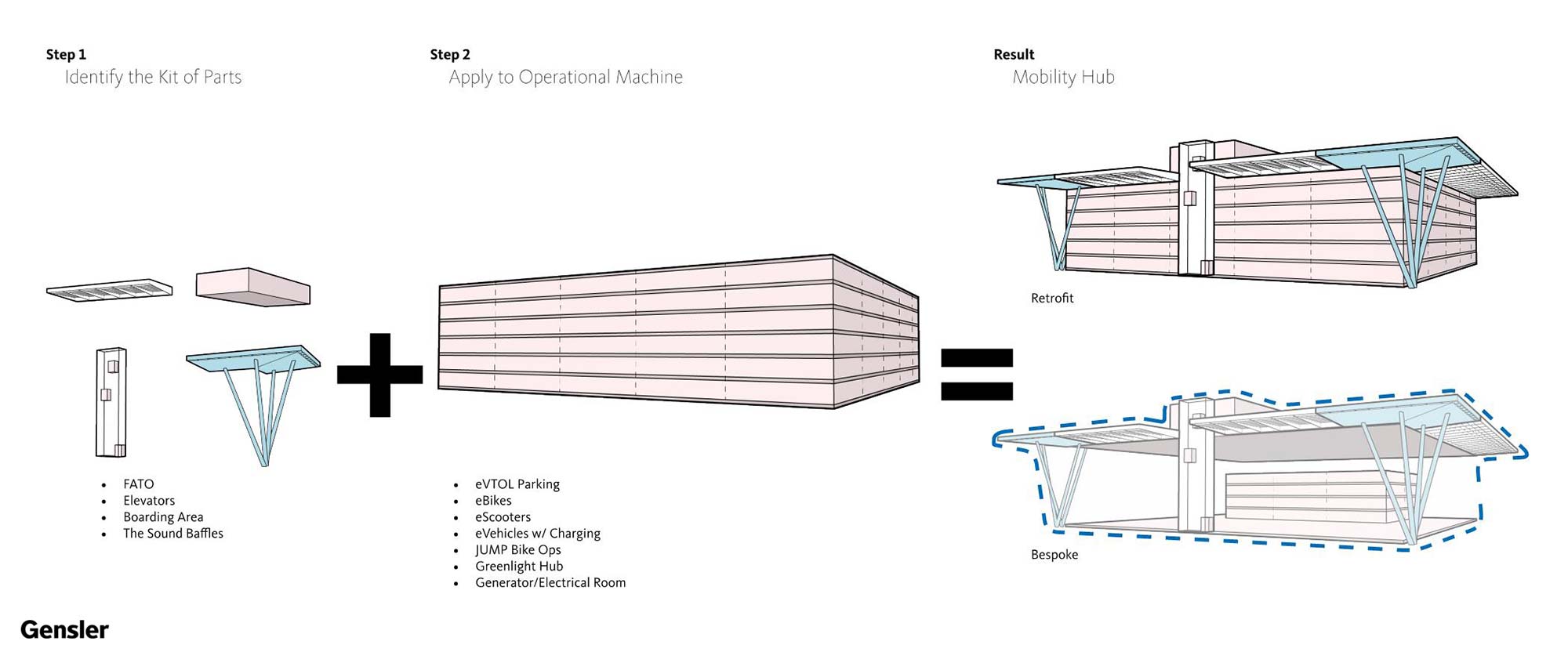
REALISTIC DESIGN
We have seen sci-fi solutions to the aerial ride share revolution; now we need a realistic solution to implement tomorrow. CitySpace will provide an efficient, modular and scalable solution.
Gensler’s design establishes a kit of parts with four key components — the FATO, Elevators, Boarding Area, and Sound Baffles, that can be easily applied to retrofit a parking structure or a bespoke (ground up) solution to fit its urban environment. These consistent design elements create brand focus and unity, as well as expedite the design and construction process. Each will facilitate a rapid roll out and minimize the effect on the local community and environment.
THE PASSENGER JOURNEY
CitySpace will become the central access point for communities. The passenger can arrive on e-bikes, e-scooters, public transit, traditional ride sharing vehicles, (or later) autonomous vehicles, then dock or charge their electrical mode, and explore the Concessions Village at the station level. Art sourced from regional artists, health and wellness, dining, retail, and other community center offerings binds a diverse community together as the literal and metaphoric hub of a city.
When they’re ready for their aerial rideshare, passengers will ascend through a glass elevator, a manifestation of the vertical movement occurring at the Skyport Mobility Hub. The glass enclosure puts vertical movement on display and provides those inside the elevators a dynamic vantage point to see the eVTOLs (electric vertical takeoff and landing) vehicles as they circle the Mobility Hub.
eVTOL pathways will stream across the sky like spokes of a wheel. Arriving at their next hub in minutes, passengers will again feed into traditional ride sharing vehicles, e-bikes, e-scooters and public transit that will make up the last mile of a passenger's journey. The Skyport Mobility Hub connects these modes of transportation to and from the aerial ride share, reducing the need for personal vehicles.
With the swipe of a finger and the simple navigation of an already-familiar app, the Skyport Mobility Hub will unify various lines of travel to create a truly streamlined transport experience. Commute times will be reduced to minutes. People won’t need private vehicles as much, which will return valuable land back to dense urban communities. Gensler’s Skyport Mobility Hub will go beyond making cities more accessible. They will make cities more livable.
For more information about our CitySpace design for the Uber Elevate Skyport concept, check out our Dialogue Blog.
